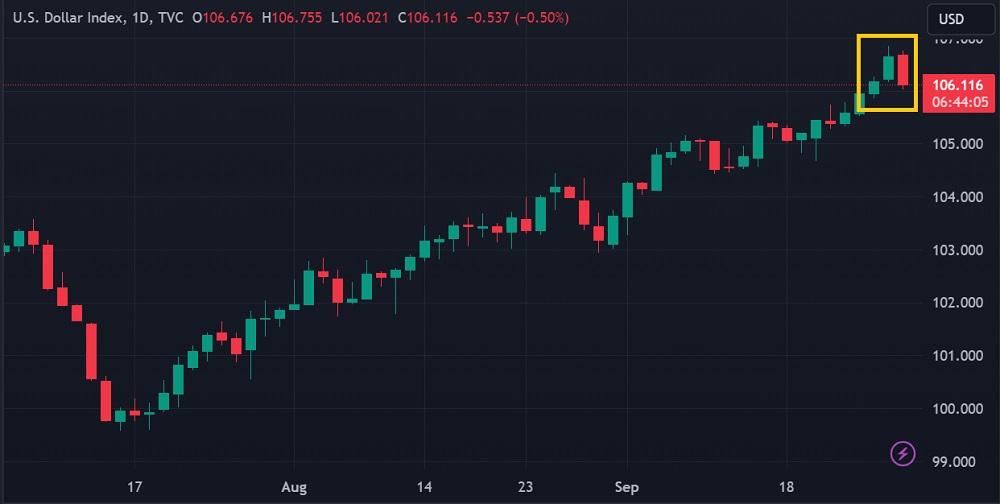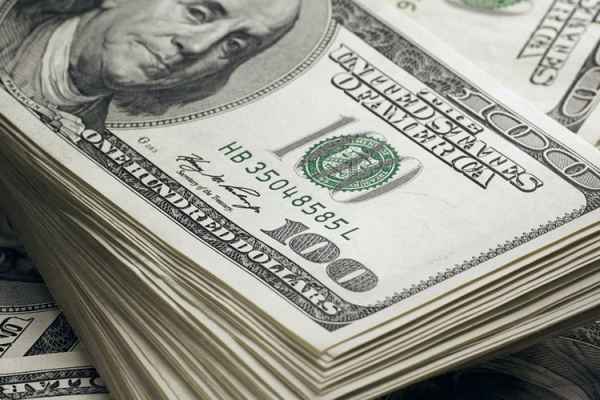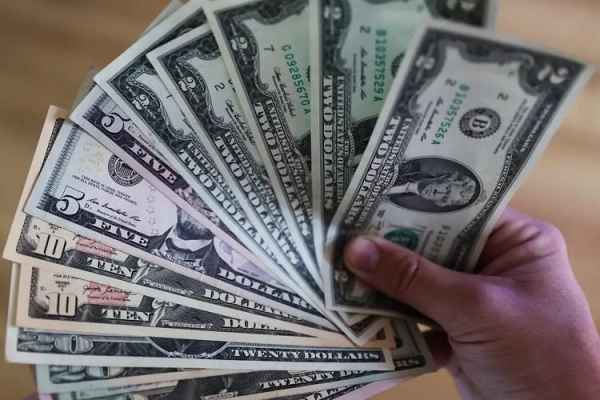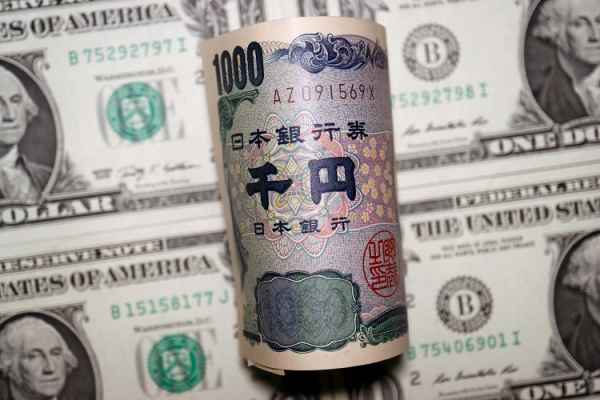Some market participants take advantage of the situation to profit by selling the US dollar, as positions in certain currency pairs have become too extreme.
The Greenback's exchange rate weakened in Thursday's (September 28) trading. The US Dollar Index (DXY) fell about 0.5% to around 106.00 in the mid-New York session, possibly signaling the end of the rally that had been ongoing since last week.

The three most impactful US economic data releases today showed a variety of figures. Gross Domestic Product (GDP) data grew by 2.1% in the second quarter of 2023, in line with previous expectations. Weekly unemployment claims data came in at 204k, better than the consensus estimate set at 215k. However, Pending Home Sales slumped to -7.1% in August 2023, a sharper decline than the market's expectation of only -0.8%.
These data points haven't changed the market's assumption that the US economy is relatively stronger than other regions like China and Europe. Expectations for Fed interest rates also remain high. However, some market participants are taking advantage of the situation to profit by selling the US dollar.
In intraday trading, EUR/USD and GBP/USD surged by more than 0.6%. AUD/USD saw a jump of over 1.1%. USD/JPY, on the other hand, corrected slightly, down around 0.3% to the 149.20 range.
Several analysts believe that the current strength of the US dollar's rivals is likely a temporary rebound. This is because the positions of various currency pairs have become too extreme.
George Vessey, an analyst at Convera, suggested that there is a significant probability of the pound experiencing additional declines in the upcoming weeks and months. He also mentioned that this period could be an opportunity for a short-term rebound or, at the very least, a consolidation at the present levels, considering the extreme oversold conditions observed in GBP/USD, reflected in the daily RSI.
W. Brad Bechtel of Jefferies LLC mentioned that they had capitalized on their GBP/USD short positions before reaching the 1.2000 target. This decision was based on the observation that price movements had been relatively extreme, and there were indications that the USD was stretched across various parameters.
Bechtel also noted that historical patterns, particularly during previous USD rally cycles in the Autumn period, showed similarities, with significant corrections occurring before a resurgence in USD buying. Consequently, they are currently anticipating such a correction in the USD.
Traders are now awaiting the next significant events, which include the speech by Fed Chair Jerome Powell tonight and the release of the PCE price index data tomorrow. These events have a limited potential to alter Fed interest rate expectations unless the actual situation deviates significantly from market forecasts.

 Dedicated FREE FOREX VPS
Dedicated FREE FOREX VPS Free FOREX Virtual Private Server
Free FOREX Virtual Private Server MT4 Demo Contest, Get $500
MT4 Demo Contest, Get $500 Sign Up for an Account, Claim 60% Deposit Bonus
Sign Up for an Account, Claim 60% Deposit Bonus Free MT4/MT5 VPS 2024
Free MT4/MT5 VPS 2024 Send E-mail and Get Free Merchandise
Send E-mail and Get Free Merchandise $1K Refer a Friend Bonus for Pepperstone Pro clients
$1K Refer a Friend Bonus for Pepperstone Pro clients Maximize Your Earnings with 100% Deposit bonus
Maximize Your Earnings with 100% Deposit bonus Trade to Win, $5,000 Monthly Demo Contest
Trade to Win, $5,000 Monthly Demo Contest Claim 30% + 15% Deposit Bonus from LiteFinance
Claim 30% + 15% Deposit Bonus from LiteFinance






